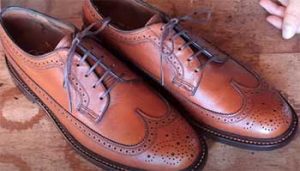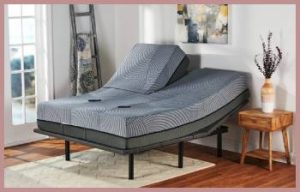For men’s fashion enthusiasts and sartorial traditionalists, few names command more respect than Loro Piana and Vitale Barberis Canonico. These two Italian mills have been producing some of the finest men’s suiting fabrics for generations, gaining loyal followings all over the world.
But with price tags that often reach into the thousands, investing in one of these luxury suits is no small decision. Those unfamiliar with the nuances of high-end tailoring may wonder – what makes these brands so special?
And how do Loro Piana and Vitale Barberis Canonico compare when it comes to quality, craftsmanship, and overall value?
This guide will examine the key differences between suits from these two titans of Italian textiles. We’ll look at their histories, manufacturing processes, cloth options, and overall reputations. Read on for an in-depth comparison of Loro Piana and Vitale Barberis Canonico.
A Brief Comparison Table
| Aspects | Loro Piana | Vitale Barberis Canonico |
| Year Founded | 1924 | 1663 |
| Ownership | Loro Piana Family | Barberis Family |
| Location | Quarona, Italy | Biella, Italy |
| Key Materials | Superfine wool, cashmere | Luxury woolens |
| Manufacturing | Vertically integrated | Vertically integrated |
| Notable Qualities | Featherweight fabrics, ultimate softness | Resilient woolens, versatile suitings |
| Price Range | $325+ per yard | $300+ per yard |
| Sample Suit Price | $5,500+ | $4,000+ |
| Reputation | Pinnacle of lightweight luxury | Paragon of wool suiting tradition |
A Brief History of Loro Piana and Vitale Barberis Canonico
To understand what sets these brands apart, it helps to first look at their origins and legacies in the world of Italian suiting.
- The History of Loro Piana

Founded in 1924 by Pietro Loro Piana, Loro Piana began as a fabrics trader and textile merchant in Italy’s Lake District.
The company soon established itself as a prominent name in luxury fabrics, pioneering the use of unique natural fibers like vicuña wool sourced from South America.
By the 1970s, Loro Piana was renowned for producing the finest and softest cloth for suits, coats, and accessories.
They remain family-owned, now operated by the fourth generation of the Loro Piana family.
Their fabrics are weaved in their own Italian mills before being contracted to top suitmakers and fashion houses.
- The History of Vitale Barberis Canonico
With roots dating back to 1663, Vitale Barberis Canonico is one of the oldest vertically integrated wool mills in the world. The mill was established in the northern Italian region of Biella, which became a hub for fine woolen textiles.
For over 350 years, Vitale Barberis Canonico has continued to operate in Biella, specializing in exceptional wool and cashmere cloth. The mill has passed down its expertise and traditions through 13 generations of the Barberis family.
Their fabrics grace the collections of esteemed brands like Brioni, Tom Ford, and other prestigious suitmakers. Vitale Barberis Canonico operates its own bottega to craft benchmark Italian suits.
Also Read: Differences Between Loro Piana And Brunello Cucinelli.
Key Differences Between Loro Piana And Vitale Barberis Canonico
- Manufacturing and Craftsmanship
Both Loro Piana and Vitale Barberis Canonico pride themselves on maintaining meticulous control over the production process. Keeping their operations in Italy allows them to monitor and perfect every step of fabric development.
Loro Piana Manufacturing
Loro Piana sources the finest raw materials available, from extra-fine Merino wool to baby cashmere. Their specialty is working with ultra-soft fibers, applying time-honored techniques for spinning, weaving, and finishing.
The wool for Loro Piana fabrics is woven on traditional looms at their mill in the Italian town of Quarona. It’s an extremely delicate process, performed by their most skilled artisans. The wool is woven into cloth known for its featherweight comfort and versatility.
Vitale Barberis Canonico Manufacturing
Similarly, Vitale Barberis Canonico handles every step of production in-house at their mill in the Italian wool capital of Biella.
They import the best raw wool from Australia and New Zealand, subjecting each bale to rigorous quality control inspections. The wool is combed and spun into the highest grade yarns, which are woven on state-of-the-art looms. The finished fabrics are finessed by hand, then carefully checked for any imperfections.
This start-to-finish integration allows Vitale Barberis Canonico to pour centuries of fabric expertise into every roll of cloth. Their fabrics are globally regarded for unparalleled quality and performance.
- Suit Fabrics and Materials
From the quality of the base materials to the construction techniques, the fabrics developed by Loro Piana and Vitale Barberis Canonico display a deep mastery of textile craft.
Loro Piana Suit Fabrics
Loro Piana has staked its reputation on its baby cashmere, vicuña wool, and other naturally soft fibers.
Their suiting fabrics utilize superfine 16.5 micron Merino wool or a blend of wool and cashmere. By using only the longest, most delicate fibers, Loro Piana cloths have an unbelievable softness and lightweight feel.
They apply special finishing techniques like steaming and pressing to further enhance the drape and comfort of the fabric. The result is a buttery-smooth cloth that feels substantial yet weightless.
Vitale Barberis Canonico Suit Fabrics

Vitale Barberis Canonico offers an extensive range of luxury suiting fabrics, including wool flannel, tropical weight wool, and wool/cashmere blends.
Many of their wool suitings utilize high-twist yarns for added resilience and shape retention.
Vitale Barberis Canonico incorporates luxurious fibers like cashmere into suit cloths that drape elegantly while maintaining structure.
Their signature Super 150’s and Super 180’s wools represent the pinnacle of suitmaking excellence, woven from the finest micron wool. Fabrics are finished with extensive handwork, including sponging and pressing, for a refined appearance and feel.
Also Read: Differences Between Isaia And Zegna Suits.
- Reputations Among Suit Enthusiasts
Over decades of providing the best suitmakers around the world, Loro Piana and Vitale Barberis Canonico have developed sterling reputations for peerless quality.
Loro Piana’s Reputation
In high-end tailored clothing, the name Loro Piana has become shorthand for ultimate luxury. Their cloths are revered for their impeccable softness and ability to skim the body beautifully. Loro Piana is the gold standard when it comes to lightweight, refined wool suiting.
A Loro Piana suit promises sublime comfort and natural ease of wear. For suit enthusiasts, they represent the pinnacle of Italian taste and fabrics expertise.
Vitale Barberis Canonico’s Reputation
Likewise, Vitale Barberis Canonico is synonymous with masterfully crafted, exceptionally durable suiting. Their fabrics are considered the epitome of a traditional wool suitcloth.
Vitale Barberis Canonico’s cloths are prized for their smooth, uniform weaves and inherent versatility. Their fabrics lend themselves flawlessly to both classical and contemporary tailoring styles. For sartorial purists, Vitale Barberis Canonico signifies dedication to the craft of textile-making.
- Price and Value Considerations
Securing a length of cloth from either of these mills doesn’t come cheaply. But devotees of Loro Piana and Vitale Barberis Canonico believe their fabrics warrant the significant investment.
Loro Piana Pricing
Loro Piana commands a decidedly high premium for their wool and cashmere fabrics. Prices generally start around $325 per yard, reaching upwards of $450 for specialty weaves containing vicuña.
Of course, these costs get passed along to the suits – expect to pay at least $5,500 for a Loro Piana suit, and often much more from prestigious tailoring houses.
However, fans contend no other cloth compares to Loro Piana for featherweight comfort and peerless refinement. For them, the price reflects the exceptional rarity and quality of these fabrics.
Vitale Barberis Canonico Pricing
Prices for Vitale Barberis Canonico’s fabrics also hover in the $300+ per yard range. Their prized Super 150’s and Super 180’s wools price nearer to $450+ per yard.
Again, these premium materials command top-tier pricing for suits – generally starting around $4,000 and easily reaching $7,000+ when cut and sewn by elite tailors.
Yet Vitale Barberis Canonico still wins praise for offering excellent bang-for-buck. The performance and longevity of their fabrics offset the initial sticker shock for many suit enthusiasts.
Which Is Better?
With so many similarities, is one of these iconic Italian mills clearly better than the other? The answer largely depends on personal tastes and priorities.
Loro Piana’s specialty is creating the lightest, softest cloths imaginable. For luxurious comfort and understated elegance, their fabrics have no equal.
Meanwhile, Vitale Barberis Canonico excels at flexible, resilient suitings cut from the world’s best wools. Their fabrics epitomize versatile, hard-wearing quality.
Those wanting suits for year-round wear may lean towards Loro Piana’s featherweight wool and cashmere. But Vitale Barberis Canonico offers excellent balance across seasons.
At their rarefied level, neither is definitively “better” – both represent Italian fabric mastery at its finest. The choice comes down to which sensibility best fits your sartorial style. Rest assured, a bespoke suit cut from cloth of either mill will likely outlast you.
Also Read: Comparison of SuitSupply And Pini Parma Suits.
Frequently Asked Questions (FAQ)
Yes, Loro Piana is widely regarded as one of the highest quality suit fabric makers in the world. Their fabrics are crafted from extremely fine fibers, resulting in lightweight cloths with unparalleled softness and comfort. Loro Piana has built a reputation over decades for being the premier name in luxury Italian suit fabrics.
Vitale Barberis Canonico remains owned and operated by the Barberis family, now in their 13th generation running the company. It is one of a small number of vertically integrated woolen mills that still handle every step of the production process in-house. This dedication has allowed Vitale Barberis Canonico to maintain its reputation for excellence in woolens for over 350 years.
Loro Piana is renowned for their meticulous focus on ultra-fine fibers, such as 16.5 micron wool and baby cashmere. They are masters at transforming these delicate fibers into fabrics with ethereal lightness and softness. Loro Piana uses special finishing processes to enhance the fluid drape and refined look of their cloths. Their specialty is creating naturally luxurious fabrics for suits, casualwear, and accessories.
The oldest continuously operating wool mill in Italy is Vitale Barberis Canonico, located in the northern region of Biella. The mill was founded in 1663 and remains family-owned after 13 generations. Vitale Barberis Canonico has specialized in spinning, weaving, and finishing fine woolen cloth for over 350 years. Their expertise with wool suitings is unmatched, and they supply fabric to the best suitmakers around the world.
Final Thoughts
- Both mills have centuries-old pedigrees as premier Italian suiting fabric houses.
- They each handle every step of production in their own Italian facilities.
- Loro Piana focuses on the finestCashmere and superfine wools. Vitale Barberis Canonico specializes in luxury woolens.
- Fabrics from both carry stellar reputations for enduring quality and craftsmanship.
- Suits from these fabrics range from $4,000 on up for bespoke tailoring.
- Loro Piana leans softer and lighter, while Vitale Barberis Canonico offers resilient versatility.
No matter your choice, investing in a bespoke suit made with fabric from Loro Piana or Vitale Barberis Canonico guarantees you’ll be enjoying it for decades to come. Their shared commitment to excellence has secured these mills as cornerstones of sartorial tradition.



